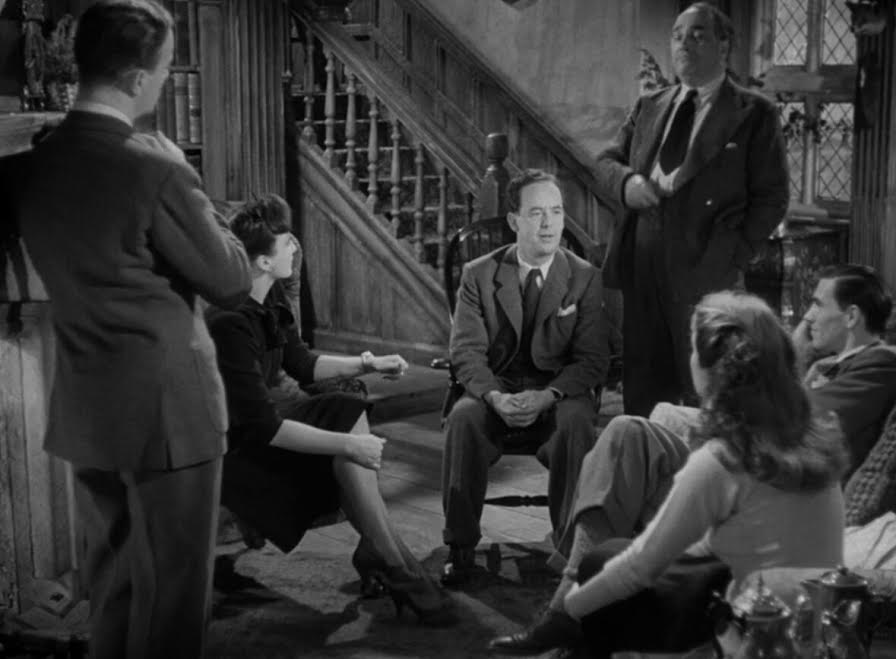
I love TCM. I also love anthology horror stories. So this was pretty much an automatic watch.
A man invites several people out to his country farmhouse for the weekend. One of the guests, Walter Craig, has a strange feeling as he drives up to the house. It’s almost as if he’s been here before, but he’s sure he hasn’t. Not only that, but the other guest that have been invited also seem oddly familiar, though he’s never met them before in person…. Only in his dreams.

Hell of a motley crew to be dreaming about.
When pressed for details, Craig tells them that he’s been dreaming about them and the farmhouse, perhaps this very weekend, for years. But he can’t remember the whole dream, just bits and pieces. As his predictions of events slowly come true the other guests begin to share their own supernatural experiences, and with each tale Craig inches closer and closer to the end of a night he becomes increasingly convinced he doesn’t want to witness.
Dead of Night has no fewer than four directors (Alberto Cavalcanti, Charles Crichton, Basil Dearden and Robert Hamer) each taking charge of directing one or more of five separate tales or the linking narrative that comprise the whole movie: racecar driver Hugh Grainger’s encounter with a creepy hearse driver, Joan Courtland’s acquisition of a malicious mirror,

young Sally’s ghostly account of hide and seek,

Eliot Foley’s tale of two competitive golf buddies,

No, no. By all means, let me get the ball.
and even the very skeptical Dr. Van Straaten’s account of a disturbed ventriloquist patient.

What do you mean disturbed? He looks fine to me.
All of the tales vary in length and none are particularly scary, (one, indeed, is actually a supernatural comedy) but the imagery and the use of light and shadow do help add to the unsettling atmosphere.

Though none are more chilling or as visually striking as the final, climactic linking sequence where the previous stately farmhouse set-up quickly spirals into the highway of the avant-garde.

The weakest link of the tales is arguably either the hearse driver story or the golfing tale. Hearse Driver, the shortest narrative of the five, lacks both the visual and psychological impact of the later accounts, though it does introduce elements that show up in the following stories. And the Golf Tale, while accompanied by some striking imagery, is told almost exclusively as a comedy, breaking up the tension of the more sinister tales it is sandwiched in between.
As far as the best story goes, for me that’s a toss up between the mirror story and the ventriloquist dummy tale. The Haunted Mirror may be the most visually striking of the five tales and I found the subtle increasing tension of the story and the contrasting visuals quite appealing. Ventriloquist’s Dummy stands out thanks to Michael Redgrave’s performance as the troubled ventriloquist, Maxwell Frere, who is seemingly tormented by his own dummy, Hugo. Has the pressure of performing caused Frere to repress his own personality in favor of the dummy, or is Hugo really a sentient being?

I don’t care. Just get that thing the hell away from me.
So is Dead of Night any good? Yes, most definitely. It’s gorgeous, well acted and atmospheric as hell. The tales may not all lean as far into the realm of creepy as those last two tales do, but they’re all entertaining (even the golf one) and the twist ending is probably one of the better one’s I’ve seen. For those who enjoy watching anthology tales, this is a definite recommendation.
Dead of Night is available on DVD and Bluray.



One thought on “Dead of Night (1945)”